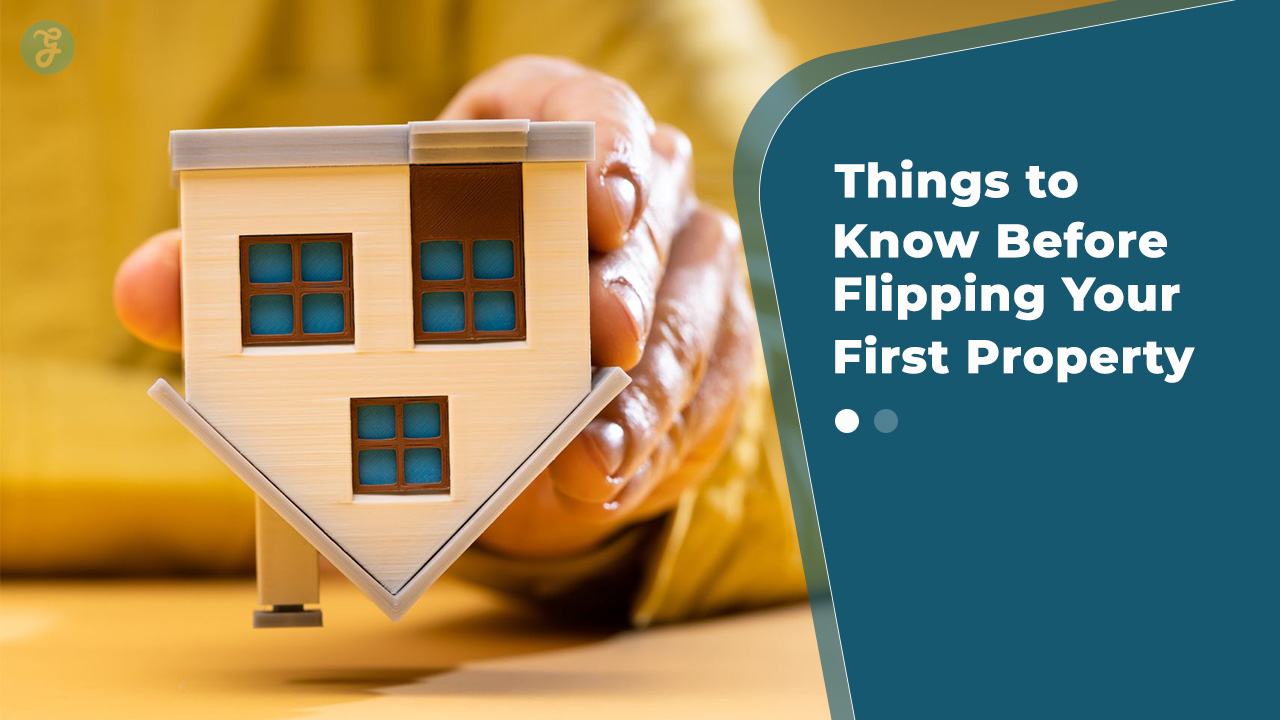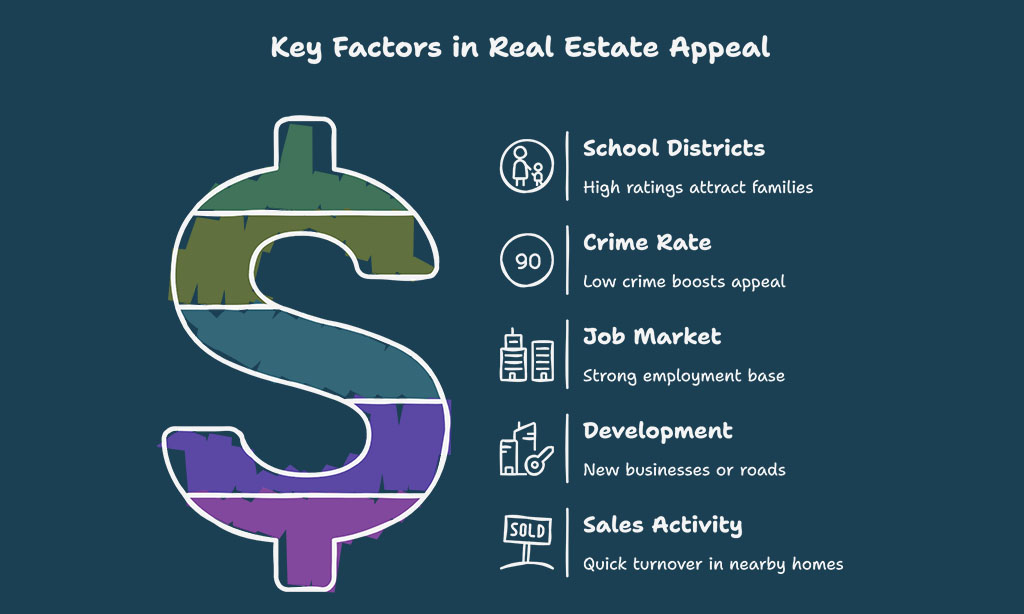Flipping houses has become one of the most popular ways to break into real estate investing, offering a fast-paced opportunity to generate profit while improving properties and neighborhoods. It’s a hands-on strategy that attracts both seasoned investors and motivated beginners alike, thanks in part to the enticing success stories frequently highlighted on reality television and social media. The concept is straightforward: buy low, fix it up, and sell high—hopefully pocketing a solid profit in the process.
However, the reality behind successful flips is much more complex. Flipping isn’t just about cosmetic updates or a few weekends of DIY painting; it involves detailed planning, financial risk management, a good grasp of market trends, and the ability to adapt quickly when things don’t go as planned. The learning curve is steep, and missteps can be costly. That’s why, if you’re just starting out, there are 10 things to know before flipping your first property that can make or break your success, helping you go in with your eyes open and your strategy sound.
This guide is packed with expert insights, practical tips, and real-world examples to prepare you for your first flip. From understanding the basics of flipping to building the right team, managing a realistic budget, and avoiding common pitfalls, we’ve covered everything you need to get started smartly and safely. Whether you’re a hands-on DIYer or a business-minded investor, these 10 things to know before flipping your first property will serve as your essential blueprint.
1. Understand the Basics of House Flipping
At its core, house flipping is the process of purchasing a residential property—often one that is undervalued, outdated, or in disrepair—with the intent to renovate it and resell it for a profit within a short time frame.
The goal is to buy low, add value through strategic improvements, and then sell high in a competitive market. Flipping is primarily a short-term investment strategy and differs greatly from long-term buy-and-hold real estate approaches that generate passive income through renting.
This method appeals to investors looking for fast returns but comes with a unique set of risks and responsibilities, especially for first-timers. From sourcing the right property and securing financing to managing renovations and handling resale logistics, flipping a property demands focus, market knowledge, and financial acumen. It’s not just about making a home look pretty—it’s a business transaction where every decision affects your bottom line.
Flipping vs. Long-Term Investing
| Feature | Flipping | Long-Term Holding |
| Time Frame | Short-term (3–12 months) | Long-term (5+ years) |
| Income Type | One-time profit | Ongoing rental income |
| Risk Level | Higher | Moderate |
| Involvement | High | Medium to low |
| Tax Impact | Short-term capital gains | Long-term capital gains |
| Cash Flow | None (until sale) | Monthly rental income |
Understanding the differences helps you set realistic goals and assess if flipping suits your financial strategy.
Example:
A first-time investor purchased a $150,000 distressed home in a growing neighborhood, spent $40,000 on renovations, and sold it for $245,000 within six months. After fees and closing costs, the investor walked away with a $35,000 net profit—an impressive return for a first flip.
2. Know Your Local Real Estate Market
One of the most crucial things to know before flipping your first property is that location can make or break your investment. The right neighborhood can significantly boost your return on investment, while the wrong one can drain your budget and delay your sale.
Flipping in the right area means looking beyond curb appeal. You need to analyze housing trends, neighborhood demographics, buyer demand, and projected growth. Markets with strong job sectors, upcoming infrastructure, or revitalization initiatives are ideal for flipping.
Factors to Evaluate
| Element | What to Look For |
| School Districts | High ratings attract families |
| Crime Rate | Low crime boosts appeal |
| Job Market | Strong employment base |
| Development | New businesses or roads |
| Sales Activity | Quick turnover in nearby homes |
Use Online Tools
- Zillow for median home values
- Redfin for local comps and trends
- Mashvisor for rental and resale analytics
Case Study:
In 2023, a flipper in Austin, TX bought a property in a gentrifying area where nearby homes were being snapped up within days. With a $50,000 renovation budget, the flipper increased the home’s value by $110,000 and sold it in under 30 days.
3. Calculate All Your Costs Upfront
Budgeting is one of the most underestimated yet critical things to know before flipping your first property. Many new flippers focus only on purchase and renovation costs—but those are just the beginning.
From transaction fees to unexpected repairs, costs can escalate quickly. Without proper planning, you risk losing your profits—or worse, going over budget.
Common Cost Categories
| Category | Examples |
| Acquisition | Purchase price, closing fees |
| Renovation | Materials, labor, permits |
| Holding Costs | Utilities, property taxes, insurance |
| Selling Costs | Realtor commission, staging, transfer taxes |
| Contingency | Unexpected repairs, delays |
Smart Budgeting Tips
- Use a spreadsheet or app to track every expense
- Add 10–20% buffer to your total renovation budget
- Get quotes in writing from contractors before starting
Real Example:
A flipper underestimated HVAC and plumbing costs, exceeding the original renovation budget by $12,000. Luckily, they had a contingency buffer and still turned a profit, but it narrowed the margin.
4. Set a Realistic Budget and Timeline
Setting clear financial and scheduling expectations is one of the most vital steps to avoid disappointment and financial loss. Among the 10 things to know before flipping your first property, being honest with yourself about what it will cost and how long it will take can prevent major headaches later.
Many first-time flippers underestimate the timeline due to inexperience or optimism. But even small setbacks can cascade into major delays. Similarly, failing to factor in every cost—from minor cosmetic repairs to interest on loans—can destroy your profit margins.
Typical Project Timeline
| Phase | Ideal Duration | Realistic Duration |
| Property Purchase | 1–2 weeks | 3–5 weeks |
| Renovation | 4–6 weeks | 6–12 weeks |
| Staging & Listing | 1 week | 2–3 weeks |
| Selling & Closing | 2–3 weeks | 4–6 weeks |
Timeline Tips:
- Always allow at least 20% extra time for unexpected delays.
- Schedule overlapping tasks when possible (e.g., order materials while permits are being approved).
- Avoid flipping in harsh winter months unless indoor-only renovations are required.
Example:
A new investor in Chicago planned for a 60-day flip, but due to permit delays and material shortages, the project lasted 110 days. Because they had only budgeted for two months of holding costs, profits were reduced by $6,500.
5. Build the Right Team
You’re only as strong as your team. One of the most underestimated yet critical things to know before flipping your first property is that you need a group of experienced professionals who understand your goals.
Your team acts as your safety net, helping you navigate the legal, financial, and construction aspects of flipping. Even if you’re handy with a hammer, trying to do everything yourself usually leads to burnout or costly errors.
Must-Have Team Members
| Role | Responsibilities |
| Real Estate Agent | Helps find deals, market & sell the property |
| Contractor | Oversees renovations and subcontractors |
| Inspector | Identifies structural or safety issues pre-purchase |
| Attorney | Handles contracts, legal paperwork, permits |
| Accountant | Helps track expenses, taxes, ROI analysis |
Vetting Tips:
- Always ask for credentials, licenses, and proof of insurance.
- Check online reviews and ask for client references.
- Choose professionals with local experience in flipping.
Example:
An investor in Denver hired a general contractor without checking references. Halfway through, the contractor abandoned the job, resulting in a three-month delay and additional costs to hire a new team. Proper vetting upfront could have saved time and money.
6. Know the Renovations That Add Value
Not all upgrades are created equal. One of the most financially strategic things to know before flipping your first property is where to invest in renovations that bring the highest return. Overspending on cosmetic features that don’t align with the neighborhood can lead to overpricing and a longer time on the market.
Understanding buyer expectations in your target area is crucial. Renovating with purpose—prioritizing updates that improve functionality, aesthetics, and energy efficiency—can drive higher offers and a faster sale.
High-ROI Renovation Areas
| Area of Renovation | Average ROI | Recommended Improvements |
| Kitchen | 77–85% | Cabinets, countertops, modern appliances |
| Bathroom | 70–78% | Vanity, lighting, tiling upgrades |
| Curb Appeal | 90%+ | Landscaping, exterior paint, new front door |
| Flooring | 80% | Replace old carpet with hardwood or vinyl |
| Paint | 100%+ | Neutral interior colors for broader appeal |
Renovation Tips
- Focus on clean, neutral aesthetics to appeal to most buyers.
- Avoid luxury upgrades that exceed neighborhood standards.
- Prioritize safety and structural repairs before aesthetic upgrades.
Real Example:
A flipper in Phoenix focused on renovating the kitchen and front yard. Instead of adding luxury features, they installed energy-efficient lighting, painted the cabinets, and updated the landscaping. The house sold within 10 days at $25,000 over the asking price.
7. Understand Financing Options
Unless you’re paying all cash, financing is a critical element of the house flipping process. One of the 10 things to know before flipping your first property is how to choose the best funding method that suits your budget, timeline, and risk tolerance.
Different types of financing come with different pros, cons, interest rates, and repayment terms. Choosing the wrong financing option could eat away at your profits through high-interest payments or time-consuming approval processes that delay your project.
Common Financing Methods
| Financing Type | Pros | Cons |
| Traditional Mortgage | Lower interest, long terms | Slow approval, strict requirements |
| Hard Money Loan | Fast approval, flexible | High interest rates, short repayment |
| Home Equity Line of Credit (HELOC) | Access to existing equity, flexible use | Risk of losing primary residence |
| Private Investors | Flexible, negotiable terms | May require sharing profits or control |
| Personal Savings | No interest or debt | Ties up personal capital |
Financing Tips
- Always get pre-approved before shopping for properties.
- Consider the total loan cost—not just monthly payments.
- Maintain a strong credit score to access better rates.
Example:
A new flipper in Atlanta chose a hard money lender for speed, securing $150,000 in just five days. However, delays in renovation led to extended holding periods, which increased interest costs and reduced net profit. A more flexible repayment plan may have helped preserve their margin.
8. Learn the Legal and Permit Requirements
Legal compliance is not optional in real estate flipping—it’s essential. One of the 10 things to know before flipping your first property is that permits, zoning laws, and code compliance can affect your timeline, resale value, and even your ability to sell at all. Skipping permits or ignoring local laws can result in fines, delays, or failed inspections, which can significantly impact your return on investment.
Before you start any renovation work, consult with your local municipality to understand what permits are needed. Common renovations that typically require permits include electrical rewiring, structural changes, HVAC updates, and plumbing modifications.
Common Projects Requiring Permits
| Renovation Type | Permit Usually Required? | Notes |
| Structural Changes | Yes | Includes wall removals and additions |
| Electrical Work | Yes | Required for rewiring or panel upgrades |
| Plumbing | Yes | For replacing pipes, water heaters, etc. |
| Roofing | Yes | Especially for full replacements |
| Painting | No | Unless lead-based paint removal is involved |
Legal Tips
- Always check with the city’s building department before starting work.
- Keep documentation of all permits and inspections for resale.
- Work only with licensed contractors familiar with local codes.
Case Study:
In Miami, a flipper bypassed permits for a bathroom addition. During the buyer’s inspection, the issue was discovered, requiring the seller to tear down and redo the work with city approval. It delayed closing by two months and cost an additional $15,000.
9. Plan for the Selling Process Early
Selling the property is not just the final step—it’s where you realize your profit or take your losses. Among the 10 things to know before flipping your first property, planning the exit strategy from the beginning is essential. Many first-time flippers focus so much on renovation that they neglect preparing for the sale until the very end, leading to rushed decisions and lost opportunities.
A strong marketing plan, accurate pricing, and attractive staging can make all the difference in how quickly the home sells—and for how much. Planning your selling strategy early allows you to sync your renovations with what today’s buyers actually want.
Key Elements of a Selling Strategy
| Element | Importance | Tips |
| Pricing | High | Use a comparative market analysis (CMA) |
| Staging | Medium | Neutral decor appeals to most buyers |
| Photography | High | Hire a pro for quality listing photos |
| Timing | High | Aim for spring or early summer sales |
| Marketing | High | Use MLS, social media, and agent networks |
Selling Options
- List with a real estate agent: Most common and efficient
- For Sale By Owner (FSBO): More control, but more effort
- Investor sale: Fast, but lower offers
Example:
A flipper in Orlando hired a professional stager and photographer before listing. The home received three offers within 48 hours and sold for $18,000 over asking. Planning ahead helped align the design, price point, and market timing.
10. Be Prepared for Unexpected Challenges
Of all the 10 things to know before flipping your first property, this one might be the most crucial: expect the unexpected. House flipping rarely goes according to plan, and the ability to adapt and respond to challenges can make or break your success.
Unanticipated problems can arise at any stage—during inspections, renovation, financing, or selling. What separates successful flippers from the rest is their ability to manage stress, think critically, and pivot quickly when things go wrong.
Common Challenges and Their Impact
| Challenge | Potential Impact | Mitigation Strategy |
| Hidden structural issues | Cost overruns | Thorough inspections, buffer budget |
| Contractor delays | Extended timeline | Vet teams well, set realistic milestones |
| Market shifts | Lower selling price | Know local trends, build in pricing flexibility |
| Permit hold-ups | Project delays | Start applications early, stay organized |
| Financing setbacks | Project stalling | Secure pre-approvals, have a backup plan |
Practical Tips
- Always keep an emergency fund separate from your main renovation budget.
- Document every process to avoid confusion or legal issues later.
- Create a checklist of contingency plans before each project.
Case Study:
A first-time flipper in Seattle encountered unpermitted work and water damage behind drywall—adding $18,000 in costs and delaying the flip by six weeks. Because the investor had a 15% contingency fund and a flexible selling timeline, the project still turned a profit, albeit smaller than projected.
The lesson? Challenges are not the exception—they’re the rule. Being mentally and financially ready for them increases your chances of success.
Final Thoughts on the 10 Things to Know Before Flipping Your First Property
Flipping houses can be a highly rewarding and potentially lucrative venture, but only when approached with the right preparation, knowledge, and mindset. It’s easy to be lured in by the success stories on TV or social media, but the reality is that house flipping requires careful planning, financial discipline, and the ability to navigate a variety of challenges along the way.
These 10 things to know before flipping your first property are more than just tips—they are the foundation of a successful flipping journey. From understanding market dynamics and building a trustworthy team, to managing renovations, finances, and unexpected setbacks, each element plays a crucial role in determining your outcome.
If you’re just getting started, use this guide as a checklist before you invest in your first property. Stay informed, keep learning, and connect with experienced mentors or local investor groups to grow your knowledge base. The more prepared you are, the more confident and profitable your first flip is likely to be.
Ultimately, flipping your first property should be viewed as both a learning experience and a business opportunity. Every decision counts, and with the right strategy, you can turn your vision into a valuable investment. Now that you know what to expect, you’re one step closer to flipping with purpose and success.







































